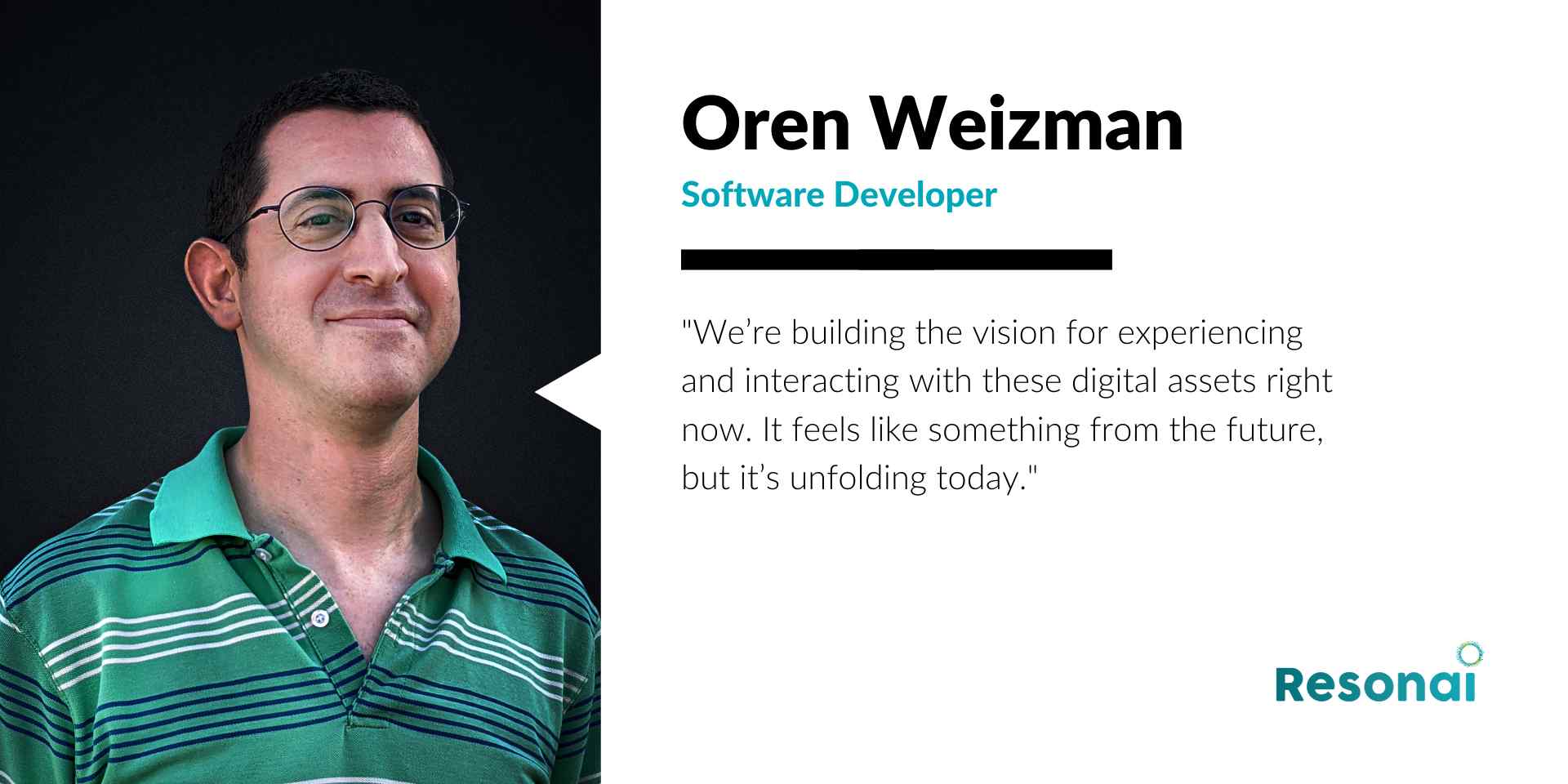Resonai Team Spotlight: Oren Weizman, Software Developer

Every building model and digital twin Resonai creates is powered by thousands of lines of code. Thanks to the tireless work of people like Oren Weizman, we’re able to create in-depth augmented reality experiences that help us gain deeper insights into the physical world around us.
We recently sat down to chat with Oren about his work with Resonai and how it contributes to AR’s future.
Interested in joining the Resonai team? Check out our open positions and apply today.
What We Learned:
- AR and game development occasionally overlap. Many innovative building managers rely on the Unity game engine to develop their AR experiences, but unlike video games, scalable AR allows for a functional experience.
- AR is a new kind of experience. People like Oren are not just creating digital objects — they’re building human experiences from the ground up.
- AR feels like the future. AR is about creating a new kind of digital experience that informs how we view the world — even without a smartphone.
Hi Oren! Can you tell us about your position at Resonai?
I'm a software developer with Resonai, and I'm working on both the Unity SDK and AR demos that use the SDK.
What does your typical day look like? I imagine you spend most of your time in Unity.
Unity is the development environment and a big part of how we develop living digital twins. There are many similarities — you render the building model, isolate objects within each room, create scripts for interactivity, and hit play to view a demo. Over time, this environment supports a finished app where the end-user can walk around in a digital space.
Usually, Unity is a big part of what I do, but Vera uses many programming languages. So on a given day, I might work inside the Unity editor, write scripts in C#, fine-tune integrations for our web applications, or dig into Java and Swift for mobile apps. We also work on tools to build 2D and 3D navigation options.
What kind of functionality does Vera support?
You start with basic features, like the client device and its capabilities. The deeper parts of Vera are what let users interact with the environment. With other SDKs, this would mostly be local — what the camera sees and what surrounds you. But Vera also accounts for the entire building mesh, semantic objects, and data that is far more comprehensive. If a client device wants to navigate the building, we need this information to understand where they are, where they’re going, and how they’re moving. And Resonai renders it all from the cloud and caches relevant blocks of data, so you aren’t downloading new information constantly.
What excites you about this sort of work?
I started out in the games industry programming mobile titles. But virtual and augmented reality caught my attention about ten years ago when I worked on my first VR demo. Shortly afterward, I became interested in body tracking technology, much like how Kinect uses sensory cameras. These demos and games were limited, but they developed a new experience rooted in technology. Eventually, I realized these kinds of projects combined everything I loved to work on.
One of the first demos we built with Resonai was a virtual toy car that you could drive through the rooms in a building. But it’s not just new tech — we already have remote control toys — it’s an entirely new platform. You need to rethink the UX, the UI, the physics of how the car moves in a physical environment. We’re accounting for more data about our surroundings than any remote control car has ever processed. And we use that data to build a more natural driving experience.
What’s attractive about creating AR models of physical spaces?
In VR, the goal of the experience is to immerse you in a digital world. AR, on the other hand, lets us experience digital assets in the physical world. There’s so much we can do, so many practical use cases, but unfortunately, people don’t understand it because it’s behind a screen. In the future, it won’t be — you might have a headset that provides directions, visualizes data, or lets you look at an office wall to see digital memos someone left for you.
We’re building the vision for experiencing and interacting with these digital assets right now. It feels like something from the future, but it’s unfolding today.
What’s it like working with Resonai? How would you describe the work culture?
I’ve worked with a lot of companies, from game developers to computer science teams. When it comes to culture and people, Resonai is the best. We all have a chance to share our ideas — it doesn’t matter how long you’ve been at Resonai, or what your position is. Everyone can bring the team forward. So we feel really comfortable saying what’s on our minds.
I just really like working with Resonai, and it’s filled with people I love to work with. We’re working hybrid, but I prefer to go into the office because the team is so great.
Thanks so much to Oren for talking to us about his experience! Are you interested in joining the Resonai team? Check out our open positions and apply today.
Subscribe to Our Newsletter!
Read More
Resonai Team Spotlight: Zachi Karni, Software Developer
Augmented reality holds immense potential for enterprises, but extracting its full value requires...
Resonai Team Spotlight: Dana Shamir, Software Developer
The field of augmented reality provides ample opportunities for a large spectrum of today’s...
Resonai Team Spotlight: Gal Sharir, Head of Design
When Gal Sharir was ten years old, she wondered why sunglasses couldn’t display the names of...